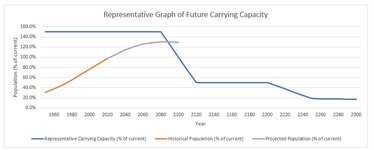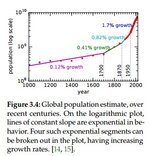DBT
Contributor
If you apply anything you learn from that science the economy is no longer steady state.1) If you have progress in science you do not have a steady state economy.How about more efficient houses and smarter transit systems inatead of just more of the same old crap?
If we can provide for our needs and wants without perpetual growth, aka Adam Smith, et al, how much more and more and more do we want need? Five houses each? Ten cars? Not enough, we need to keep adding more and perpetual growth is the key?
A steady state economy doesn't exclude living well, innovation, efficiency or progress in science. It just excludes the notion of perpetual growth in population and exploitation of natural resources, which, given a finite world that we have alreading overburdened, is a Ponzi scheme heading for disaster.
2) Even if it is stable you're still mining resources. That's not infinite. We aren't going to suddenly run out of something but the effort required to obtain things will increase--and such effort is no longer available for maintaining our standard of living. Eventually a point will be reached where there is negative output.
The Greens have this utterly unrealistic view of small technology that by some magical means has no resource inputs.
Progress in understanding the natural world is achieved through research, observation and testing. A steady state economy doesn't exclude allocating funds for scientific research. It just excludes perpetual growth in population, economic growth and consumption, which is impossible in any case: Adam Smith, et al.
That's an odd assertion. The point of new technology is that it can provide a more efficient system, doing things better and using less energy. Building a better understanding of the natural world doesn't require using more and more resources, just a constant allocation of funds for research.


